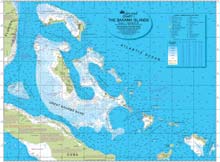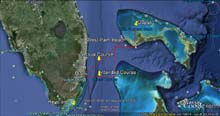
 Custom Search
|
| boat plans |
| canoe/kayak |
| electrical |
| epoxy/supplies |
| fasteners |
| gear |
| gift certificates |
| hardware |
| hatches/deckplates |
| media |
| paint/varnish |
| rope/line |
| rowing/sculling |
| sailmaking |
| sails |
| tools |
| join |
| home |
| indexes |
| classifieds |
| calendar |
| archives |
| about |
| links |
| Join Duckworks Get free newsletter CLICK HERE |
|
|
| Imaginary Breezes |
by Tom Pamperin – Chippewa Falls, Wisconsin – USA Hoisting the Black Flag |
 |
Mencken was right. I just finished reading Flash Boys: A Wall Street Revolt, John Lewis’s nonfiction account of a few honest people attempting to fight the fraud and corruption that define twenty-first-century Wall Street. Big banks, high-frequency traders, ultra-complex algorithms, mysterious “dark pools” - an entire system designed to pull money from the pockets of everyday people and hand it over to parasitical middlemen and outright swindlers. I had always known that Wall Street leaned sharply toward greed and corruption, but I’d assumed that those tendencies were the result of individual human failings, the natural consequence of tossing a bunch of bad apples into a single barrel. Flash Boys, though, paints a very different picture: over the last twenty-five years, greed and corruption have been intentionally designed into the very structures and procedures of the financial system itself. Many of the apples are bad, all right - but the barrel, it turns out, is even worse.
Flash Boys: if you feel compelled to know the truth (and really, you should), read it. But the truth will not make you happy… Most un-coincidentally, I finished Lewis’s book on the same day I received my first statement from the Roth IRA I had opened earlier in the year - my own little piece of the stock market. An even smaller piece than I had originally intended, as I discovered when I opened the envelope and read the report. In just a few short months, my account had decreased in value by eight percent. “Take a look at this,” I said, handing the envelope to my wife. “If this keeps up for another three and a half years, we’re going to owe them money. Start saving.” She merely glanced at the report and, wisely, declined to comment. “Don’t worry, though,” I assured her, grabbing the statement back. “This will never go unpunished. Heads will roll and banks will crumble. After all, we sent a guy to jail for all that sub-prime mortgage fraud, eventually.” (That’s pretty much true, by the way. One guy went to jail. You can read about it in The New York Times Magazine: Why Only One Top Banker Went to Jail for the Financial Crisis.) My wife murmured something unintelligible but vaguely soothing and left the room. That’s when I remembered Mencken. Tossing the report on the table, I went outside, dragged my mostly completed Alaska out of the garage, set up the masts, and climbed aboard, trying to remember whether the Duckworks online store sold black flags. I was going to need one. A Merry Life and a Short One “‘A merry life and a short one’ shall be my motto,” explained renowned pirate captain Bartholomew Roberts at the start of his pirating career, according to a brief biographical summary compiled from arguably questionable sources by a man who never met him or, for that matter, anyone who knew him. It’s an excellent motto, though. Sitting in my boat on its trailer in the driveway, I decided to carve the words into the mainmast partner, right beneath the belaying pin for the black flag’s halyard. But I came to my senses with a jolt. I had actually been about to work on the boat - work! - when there was sailing to be done. Imaginary sailing, true, but fundamental guiding principles must not be forsaken in the face of such flimsy objections. I had climbed aboard to find an escape from the ever-turning grindstone, a reminder that our lives were not meant to be lived so a few fat cats could get even fatter. No, I told myself, I must refuse to surrender meekly to the puritanical work ethic foisted upon us in the guise of morality so that undeserving plutocrats can profit from the labor they have shamed us into taking on. Thus resolved to forego any more work for the day - work of any kind - I stood up, struck a heroic pose, and made my declaration: “Now is the time for the hoisting of sails; now is the time for the weighing of anchors; now is the time for the sharpening of knives and the raising of black flags!” And so I began. Shaded by Tall Coconut Palms Bent by the Trade Wind… Even when the voyage is imaginary, there’s only one place to get piratical in a small, open boat: the Bahamas. Everywhere else is too far away, or too civilized. Or too uncivilized. Or not tropical enough. Or whatever.
Not only are the Bahamas actual pirate territory historically, but they could also be a realistic cruising destination (just barely) for a sail-and-oar boat handled by a skipper afflicted with a certain degree of paranoia, an unexplainable fondness for marginally risky behavior, and sufficient luck to make up the difference between the two. Jimmy Cornell, in his comprehensive blue-water guidebook World Cruising Routes, rather snootily suggests that the relatively short approaches to the Bahamas from Florida “cannot be regarded as offshore routes” - an opinion I suspect he’d abandon with some alacrity if he found himself at the helm of a sail-and-oar cruiser in mid-Gulf Stream with a northerly breeze blowing. But even in an open boat, you probably (probably!) won’t die trying to make the trip. (You might die once you get there, though. World Cruising Routes notes that the Bahamas’ popularity “has declined of late due to reported cases of piracy” - perfect for the purposes of the proposed voyage. Of course, that’s from the 1987 edition; it’s not an adventure if you have all the latest information.) Plenty of people have sailed to the Bahamas, of course - even in tiny boats. David Bolduc, for one, has repeatedly made the crossing from Florida aboard his Matt Layden-designed micro-cruisers: You can check out the routes he has sailed on various Bahamas trips HERE Matt Layden’s boats, of course, are famously seaworthy craft, fully ballasted, sailed from inside, and well able to handle rough conditions despite their small size. But I suspect (though I’m too lazy to verify it) that the crossing from Florida to the Bahamas has been made in small open boats as well. Certainly there have been similarly ambitious sail-and-oar voyages elsewhere, like Ben Cranshaw’s Mediterranean journeys (especially his passage to Ibiza) in a Gavin Atkin-designed Light Trow (which you can read about HERE): So, my proposed route is, if not exactly casual, at least within the bounds of sanity. But the one thing that separates a hop to the Bahamas from a Mediterranean cruise (besides roughly 3,800 nautical miles of Atlantic Ocean) is the presence of the Gulf Stream, the northerly current that sweeps past the east coast of Florida at somewhere between two and five knots. (A pre-emptive note about currents to forestall the indignant, “he-got-it-wrong” letters some of you may already be preparing to write: winds are properly identified by their point of origin, currents by their destination - one of those charming inconsistencies that I love about sailing. My Canadian charts insist on giving distances in kilometers and depths in feet. Using them, I make rough guesses at speed in knots while thinking in statute miles. Somehow I always end up where I am.) For an imaginary voyage like this, of course, precision is unnecessary. Taking an approximation of the Gulf Stream’s average speed (3 knots) and comparing it with a rough guess at my boat’s average speed (3 knots), it’s possible to apply a bit of simple geometry to reveal an interesting problem: If I tried to sail the shortest route (due east from Miami to the nearest port of entry at Bimini, a distance of about 50 miles), I’d risk being swept right past the Bahamas altogether:
Tricky, this navigating stuff. Heading due east from Miami is clearly not the answer, no matter what it looks like on Google Earth. Better to start from farther south - Key Largo, perhaps - and let the current work in my favor:
Landfall at Bimini - that’s more like it! Remember, these are rough approximations of the effects of current. This is also (so far, anyway) an imaginary voyage. I’m not trying to persuade anyone to jump in his boat and set off from Key Largo in reality, heading “kind of a bit south of east” and hoping to end up in Bimini. Though that would probably work. In theory. (If you try it, write a Duckworks article to tell us how it went). If you want to explore how to navigate your way across the Gulf Stream in a little greater detail, though, THIS isn’t a bad place to start. David Bolduc, who has sailed the actual crossing from Key Largo to Bimini, says it took him about 18 hours aboard his Enigma - a little faster than what I’d expect from my own sail-and-oar boat for the route above. Which brings on one more complication: If my guess at my boat’s average speed (3 knots) is correct, I’d reach Bimini in about 22 hours. That means I’d have to sail through the night to avoid making landfall in the dark. I like sailing at night. But sailing at night in traffic is sometimes another thing altogether. In the comments section of his Bahamas YouTube video (posted above), David Bolduc reports that “keeping watch on all the ships that crossed my course throughout the long night” was the main challenge of the crossing. Plenty of prey, in other words. I’ll keep the black flag hoisted and the knives sharpened. No matter what happens, I can’t lose. I’ll either cross paths with a helpless freighter or ocean liner and bring home a fat prize, or I’ll continue unmolested to Bimini, spend a few months cruising in the Bahamas, and try again on the return trip to Florida. And if the worst should happen, and I’m dragged home in chains to suffer the consequences of my piratical behavior, I’ll have my last words (borrowed from an actual pirate who was hanged in Providence in the Bahamas, in 1718) ready: “Are you sorry for what you’ve done?” they’ll ask as they slip the noose over my head. “Do you repent of your wickedness?” “Yes,” I’ll tell them, grinning. “I do most heartily repent. I repent I had not done more mischief, and that we did not cut the throats of them that took us; and I am extremely sorry that you aren’t all hanged as well.” Tom
|
||||||
|







